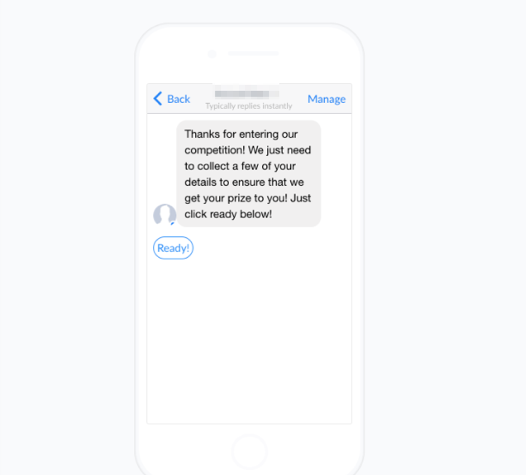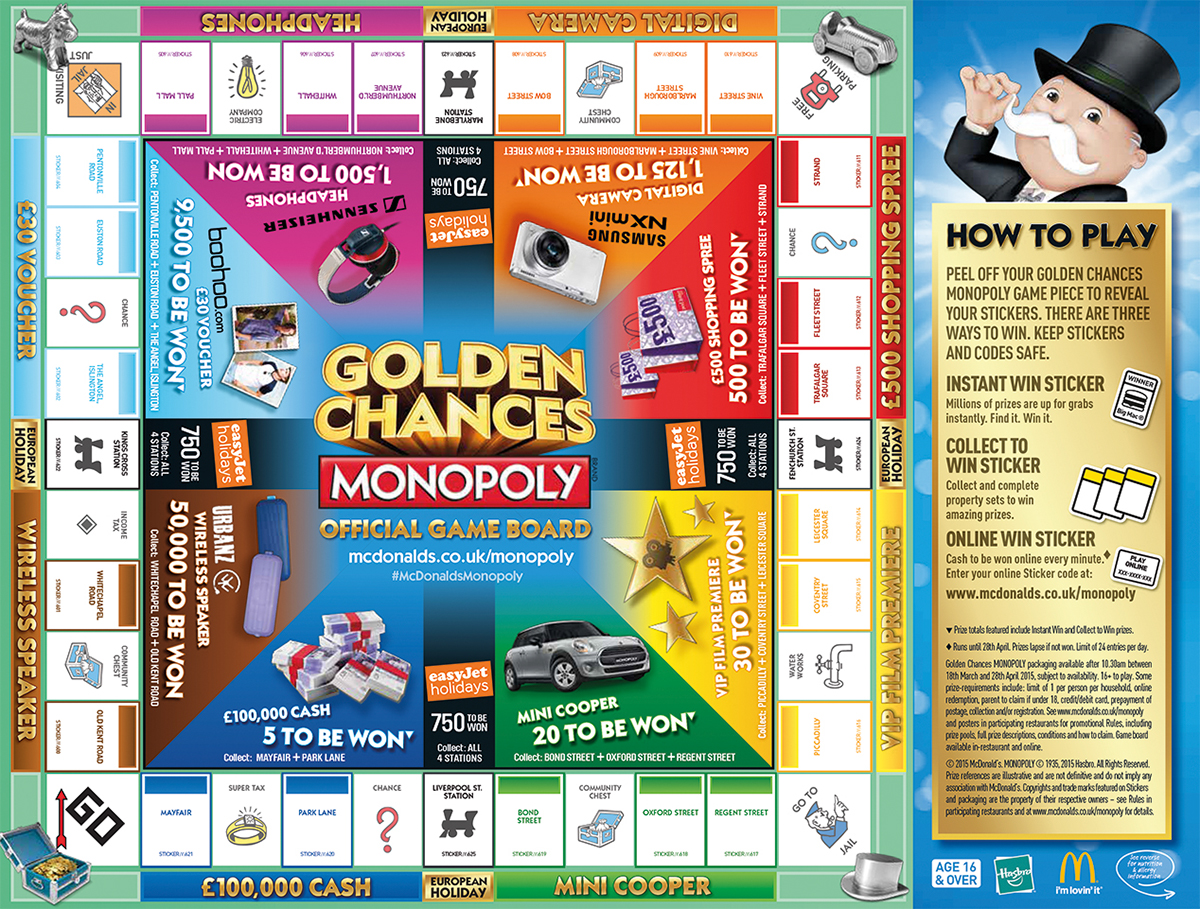Games and marketing are a match made in heaven…
…but finding a sweet spot that engages, entertains and stays clear of the perilous trying-too-hard-tag is something that many businesses struggle with.
When gamification works, it does crazy things for businesses and the inspiration behind this article proves it.
When it came to writing a new article (this week), I delved into my bank of content ideas, read through the latest messages from readers and analysed our category stats from the past few months (as I always do)…
…but something happened at lunch in our office for the third time in a week…(at least) 4 of our team went to Mcdonald’s.
Why? Mcdonald’s is running the Monopoly game again!
For anybody who doesn’t know, every so often, Mcdonald’s place stickers on their food cartons with Monopoly streets (or prizes) on them. If you collect an entire street, you win a prize!
In other words, eating at Mcdonald’s becomes a game, encouraging customers to return time and time again (and put on a few extra pounds in the process).
After watching the effects it had on some of our team, I figured it was time to do some research, look at our own client work and present you with 5 strategies that can have the same draw for your business.
Let’s get into them:
Contents
Gamification in Marketing
#1: Competition
This is one of my favourites. As an agency, we have used this strategy to produce incredible ROIs in the past (and we have a very distinct way of doing it).
Competitions build lists, generate sales and create a buzz around your business. They show you as somebody who cares about their customers and is prepared to reward them for interacting with you.
The best thing about competitions (in my opinion) is the excitement it creates in your following. In the build-up to the results and winners being announced, many of the entrants will constantly check back to see their status, engage with your business and keep up to date with your latest social posts.
I’d suggest offering something away for free or at a massive discount (although this won’t work as well) and asking for the prospect’s contact details in exchange. And then, if you’re super clever (like us) ask your entrants to share the competition on social for an extra entry!

By the end of the competition, you will have built a list of people who are all interested in the offering that you can remarket to. A pro-tip is to tell everybody who didn’t win, that they’re runners-up and offer them a runners-up prize (e.g. a discount on the product you used for the competition).
If you’d like to learn more about this strategy, I’ve written a case study about it in our Messenger Marketing post.
#2: UGC (User Generated Content)
User-generated-content contests are amazing ways to engage prospects, get them involved with your business and make you more relatable.
They work by asking the public (starting with your social followers) to post a self-made piece of content under your contest/competition guidelines.
If you’re lucky, your contest will generate a high volume of entries and encourage people to share it on their own social profiles, creating a viral-like effect.
This type of gamification works especially well when asking users to create a video or image. These are really quick to create and they don’t demand the same levels of effort as a written entry (like this!).
One of the best examples of a UGC contest is NatGeo’s wanderlust contest. This competition asked users to enter their best nature shot simply by tagging their photo with the hashtag #wanderlustcontest on Instagram.

This made it incredibly easy for users to enter (without having to go out of their way) and allowed entrants to view their competitors’ entries!
#3: Badges
Ever heard the saying, ‘wearing it like a badge of honour?’
When it comes to marketing, customers love to show off their loyalty, and by encouraging them to do this, they’re effectively recommending you to others!
Rewarding your prospects/customers with badges as they make their way through their purchasing journey can be a great way of encouraging them to keep going (so they achieve more badges) and share their experiences with others.
Badges, pins or stamps are a very simple and yet incredibly easy way of gamifying your offerings. They offer status, aspiration and fun for prospects.
A great example of the use of badges is by the popular game streaming service Twitch.

They encourage their content creators to reward loyal members of their community with a VIP badge. These users are immune to channel moderation settings and have the VIP badge beside their username, proving their loyalty to the rest of the community.
#4: Collaboration Offers
Remember that Mcdonald’s game I mentioned earlier? That’s an example of a collaboration offer between Hasbro (the owners of Monopoly) and the world’s biggest fast-food chain.
Mcdonald’s receive the benefits of return custom and better engagement from their customers, whilst Hasbro increases their exposure and remains relevant in today’s intensely-competitive game market.

Collaboration offers benefits to two companies equally, effectively increasing their reach by tapping into their partner’s audience, aiding their growth.
If you are keen on creating a collaboration offer (like Mcdonald’s) be careful not to team up with a competitor, as you may lose long-term business. I’d suggest picking a business that appeals to your target market but is in a completely different industry to your own.
Look at the way Mcdonald’s has used this tactic with such amazing facts. They’ve made the collaboration offer into a game. Everybody is not a winner, instead, they are encouraged to return to collect more stickers and increase their chances of winning.
#5: Points/Completeness Meter
Points and completeness meters aren’t quite the same, but they’re close enough to bundle together into the same point.
Completeness meters are a gamifying tactic often used by websites that require users to create a profile. These work because the more a user puts into their profile, the more likely they are to connect with others and return to the website.
A great example of this is LinkedIn. They ask their users to fill in every part of their profile and as they do this, the completeness meter on their profile page goes up. This encourages them to become more involved in the LinkedIn platform.

If you’ve got a website with content that requires a login or even a members area, why not try adding a completeness meter into the profile section?
A similar tactic to the completeness meter is a points-based system. There are a number of ways of doing this, it can be used in profile areas, every time a customer makes a purchase, engages with your brand or takes another step on their purchase journey.
One business that used a points-based system to drive more engagement on its website was Samsung. They rewarded their users with points every time they engaged with their content, and the more effort required per engagement (e.g. answer questions, watch videos, share on social) the more points they received.
Gamification in Marketing: Conclusion
Games can do amazing things for your marketing campaigns, business growth and brand image.
The 5 tactics highlighted in this article have all been used by some of the biggest brands in the world with amazing effects. If doing something as simple as adding points, a badge or creating a contest can make a huge return for them, why can’t it do the same for you?
Obviously, your branding, industry and offer must fit the gamification process that you select. Analyse your customer’s demographics and pick the most suitable strategy!
What do you think about gamification in marketing? Have any of these strategies lured you into a repeat purchase?
- Author Details




